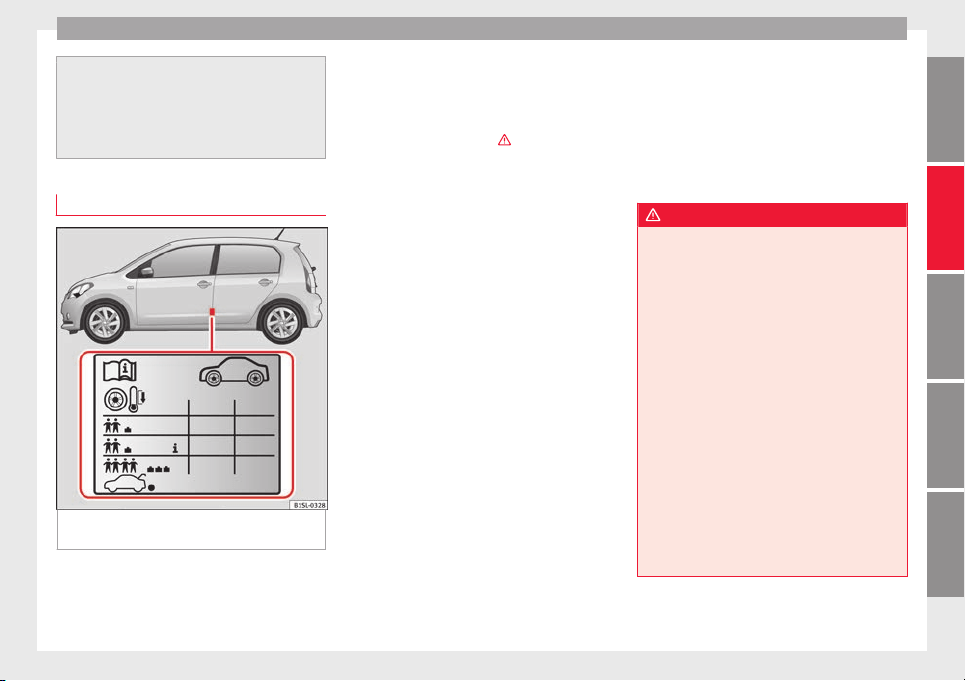Loading ...
Loading ...
Loading ...

Wheels and tyres
will be correct for your vehicle. For other tyre
models, the tyr
e vendor should provide the
manufacturer's certificate with the tyre, indi-
cating that this type of tyre is suitable for
your vehicle. This certificate should always
be carried with the vehicle.
Tyre pressures
Fig. 174 Position of tyre pressure specifica-
tion p
l
at
e
The correct tyre pressures for tyres fitted at
the f
act
or
y is shown on a label and is valid
for summer and winter tyres. The label
››› Fig. 174 is located on the driver's door pil-
lar.
Under-inflation or over-inflation will reduce
the life of the tyres considerably and also im-
pair the car's handling ›››
. It is essential to
m
aint
ain the c
orrect tyre pressures, especial-
ly if driving at high speeds. Incorrect tyre
pressure causes premature wear and could
cause tyre blow-out.
The pressure should therefore be checked at
least once a month and before starting a
journey.
As a general rule, the pressures given are for
cold tyres. When the tyres are hot, the pres-
sures are greater.
Never deflate a hot tyre in order to obtain the
required pressure. This could result in very
low tyre pressures which may lead to sudden
blow-outs.
Tyre pressure monitoring system
Check tyre pressures only when the vehicle
has not been driven for more than a few kilo-
metres at low speeds in the past three hours.
●
The tyre pressures should be checked regu-
larly, and only when the tyres are cold. Al-
ways check all tyres, including the spare
wheel. Tyre pressures should be checked
more often in colder regions, and only when
the vehicle has not been driven recently. Al-
ways use a correctly-operating tyre gauge.
●
Adjust tyre pressures to the loads carried in
the vehicle.
●
After adjusting the tyre pressure, check that
the caps are properly screwed on.
The spare wheel or temporary spare wheel
must always be kept at the maximum pres-
sure stipulated.
WARNING
If tyre pressures are too high or too low, the
tyre m
ay deflate or burst suddenly while driv-
ing. This could result in a serious accident.
●
If the tyre pressure is too low, they could
overheat, resulting in tread detachment or
even burst tyres.
●
When driving at high speeds and/or fully
loaded, the tyre could suddenly overheat,
burst or be subject to tread detachment, with
the resultant loss of control of the vehicle.
●
Tyre pressures which are too high or too
low reduce the service life of the tyre, affect-
ing the vehicle's performance.
●
Tyre pressures should be checked regularly,
at least once a month and before long jour-
neys.
●
Adjust the pressures of all the tyres to the
vehicle load.
●
Never deflate excess pressure from hot
tyres.
»
203
Technical dataAdviceOperationEmergenciesSafety
Loading ...
Loading ...
Loading ...